On the road with Trampito
Cartagena is a fabulous city, its old town within the city walls with narrow streets, gorgeous churches, shaded plazas, lively atmosphere and colourful history is absolutely world class. But after eight days of waiting for Tramp to arrive from Panama and the prospect of another five days before we could rescue him from the ship Julie and I decided to pull the plug on Cartagena and explore further afield. We hired a little red Hyundai car, which we quickly dubbed Trampito (little Tramp) and headed out into the Colombian wilderness for a long weekend.
I’ve hired cars in dozens of countries around the world and had great fun driving in new places. But I’ve never heard or seen the special conditions of hiring a car in Colombia. First, the printer wasn’t working so the contract was manually completed. Second, cars in Colombia are forbidden to drive in some places on some days, depending on their licence plate number (to reduce traffic and save the environment). Our car couldn’t drive in Cartagena on Friday but since this is Thursday and we were leaving town that wouldn’t hurt us. We had to check with other cities to see if our car would be grounded when we got there.
Third, rental cars can only go in certain areas without getting additional permission. This is a security issue. Luckily we weren’t going to any place that required more paperwork. But most amazing of all, I had to be finger-printed (four times!) and my index finger print is on the rental contract. When I asked the guy why this was required his simple answer was “This is Colombia”.
The drive out of Cartagena was on crowded hectic roads but once we cleared the cosmopolitan area there was only a steady stream of slow moving trucks to deal with. Trampito didn’t have the get up and go of big Tramp but he managed the hills and got us around the trucks when it was half safe.
But progress was slow and our target for the night, the World Heritage listed colonial town of Mompox, was beyond our reach so we found a decent hotel at the large river town of Maganue and had a pleasant evening. Our plan was to catch the 7am ferry across the Magdalena River and then drive into Mompox which is a city the Spanish built starting in the 16th century to help ferry their gold and silver to the coast and then on to Spain. But after a couple of centuries they abandoned the city and today it is more like a living museum of beautiful churches, buildings and plazas.
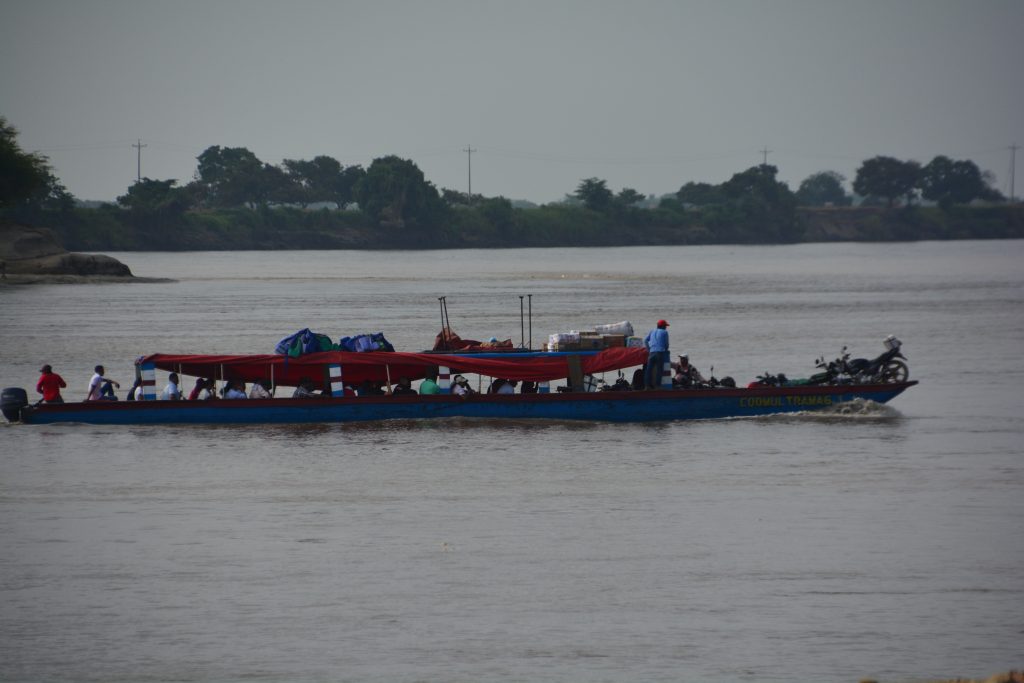
An early morning boat carries locals and their goods – notice the motorbike on the front – from one side of the Magdalena River to the other
Alas, timing is everything and bad information can ruin even good planning. When we got to the ferry loading ramp about 6.45 – which we were assured would be plenty of time – the ferry was full and the next one wasn’t until 10.00 (or thereabouts). Never mind, we filled the time and then enjoyed the spectacle of the next ferry arriving, unloading its cargo and then loading up its new cargo, including Trampito. At one stage near the end of loading all these huge transport trucks, carrying loads of bananas, bricks, building material, furniture and who knows what the captain realised the weight of the load had grounded him on the sandy bank.
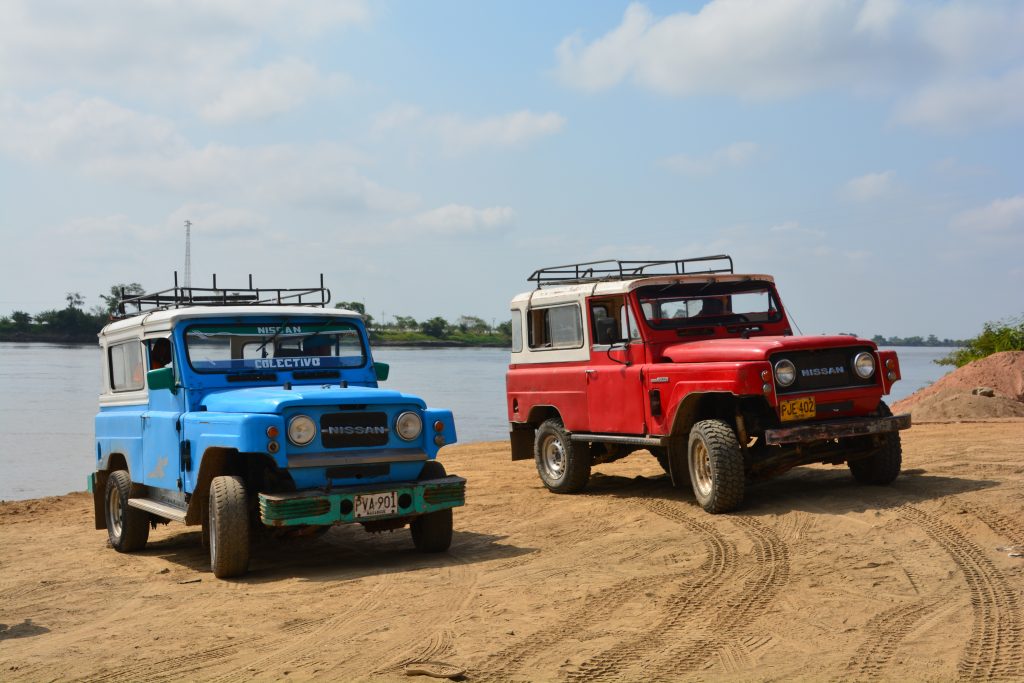
Two fantastic old trucks dating back 45 years now act as local taxis and wait for passengers from the incoming boat
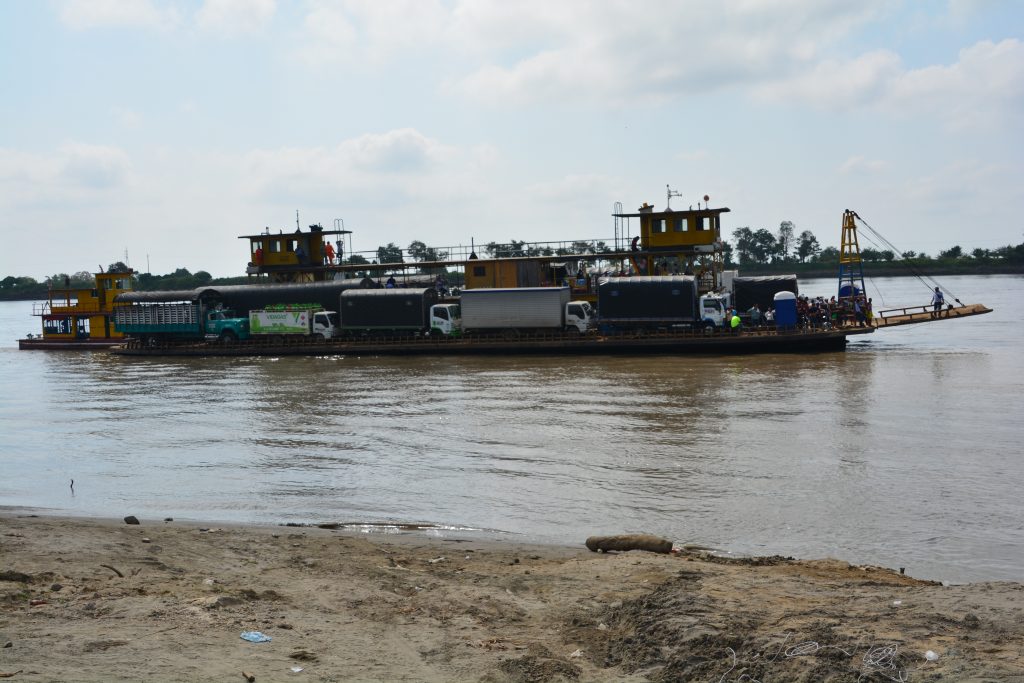
And here it comes! Our ferry finally arrives and it is packed with huge trucks, cars, even some spare outdoor toilets!
So off came a few large trucks from the front of the boat, grind the big boat engines in full reverse and reposition it at a safer angle on the sandy bank. Problem solved, reload all the trucks, actually squeeze two more in, and off we go about 90 minutes later than expected. But as we’ve learned in Colombia, and especially seen in rural Colombia, time is of no matter.
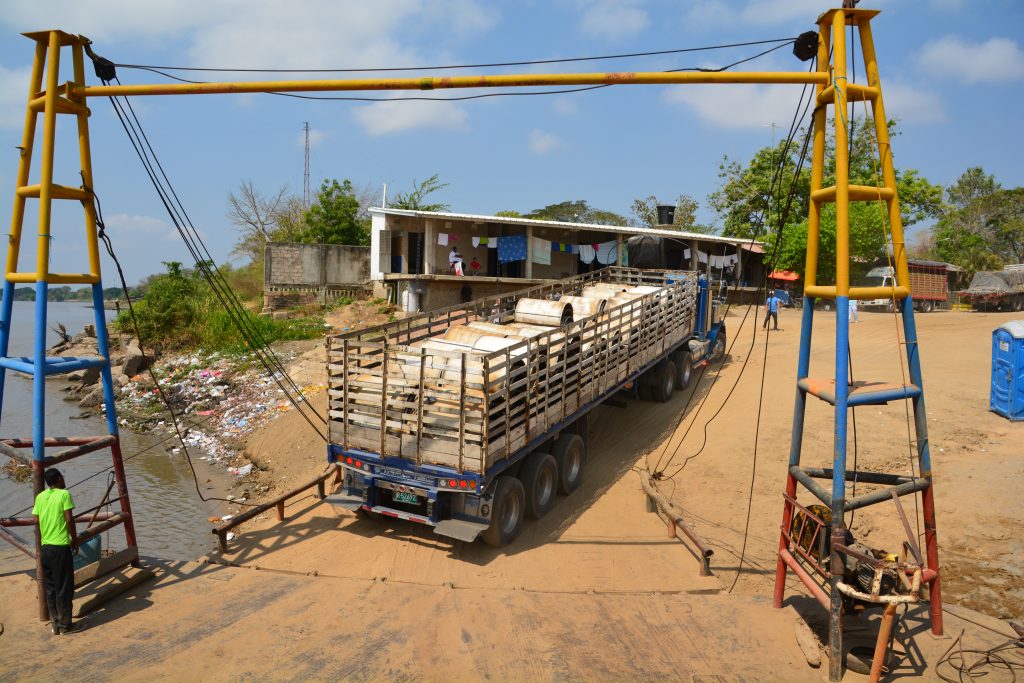
This guy is actually getting on the boat – backwards! They need to do this so they can get off easier at the other end.
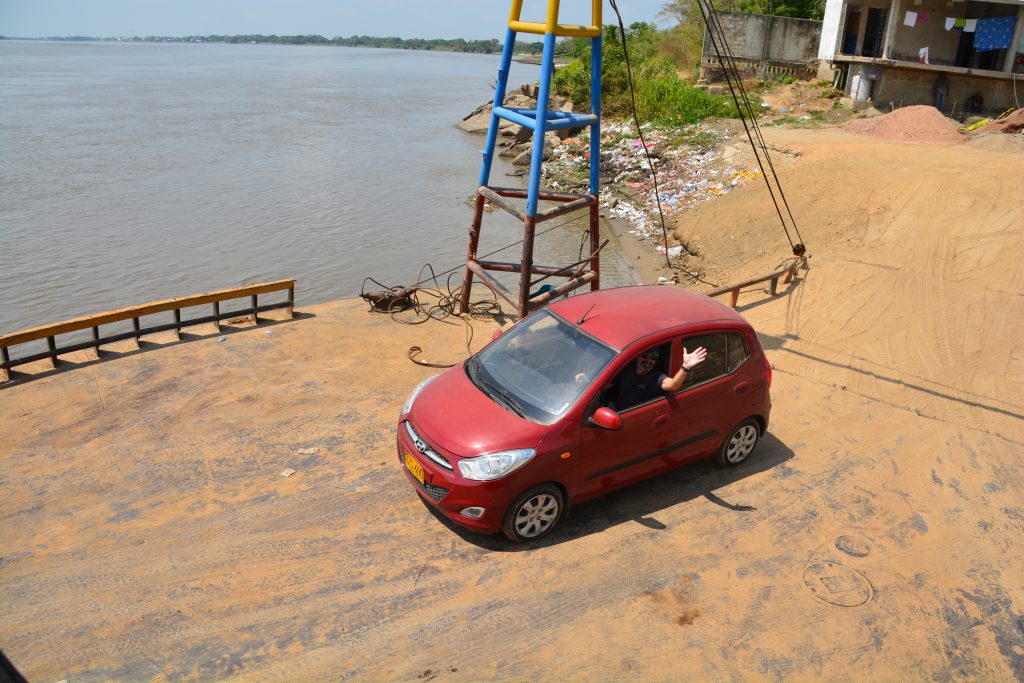
Finally Trampito gets his turn and gracefully makes the transition from land to boat without any problems
The Magdalena River is the main source for the vast wetlands that cover the northern reaches of Central Colombia. Its numerous tentacles and tributaries spread water far and wide, making travel and transport very difficult. This played to the advantage of Mompox in the colonial days but since then has left it somewhat abandoned and hard to reach. Our ferry took about 90 minutes to arrive at the small village of Bodega which is on the opposite banks of the river and down a separate tributary. This is where the fun began.
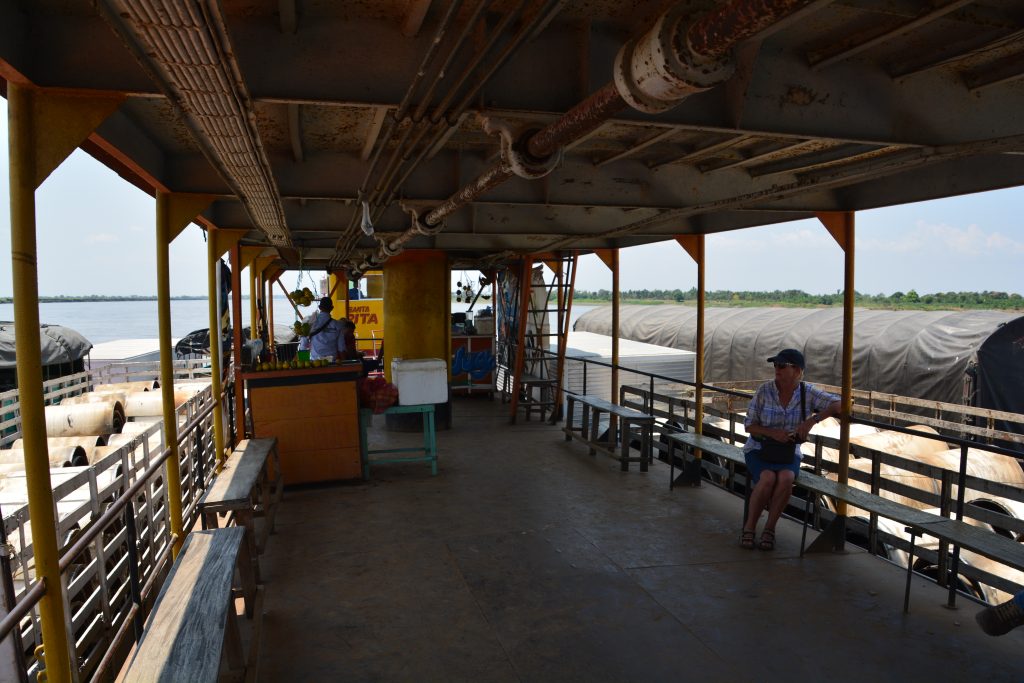
We had a tranquil and beautiful river cruise to the small riverside community of Bodega – quite a treat
The banks of the river at Bodega were quite steep and the sandy silt was fine like powder. We watched numerous vehicles struggle to drive off the ferry’s ramp and up the steep soft embankment. Some cars needed to be pushed, trucks needed to run up the hill a couple of times. I wondered how little Trampito would do given his clearance is only a few inches and his tires were the size of a dinner plate. But when the time came and the audience was anticipating failure Trampito spun and slid his way up the bank and onto solid ground. On ya, big guy!
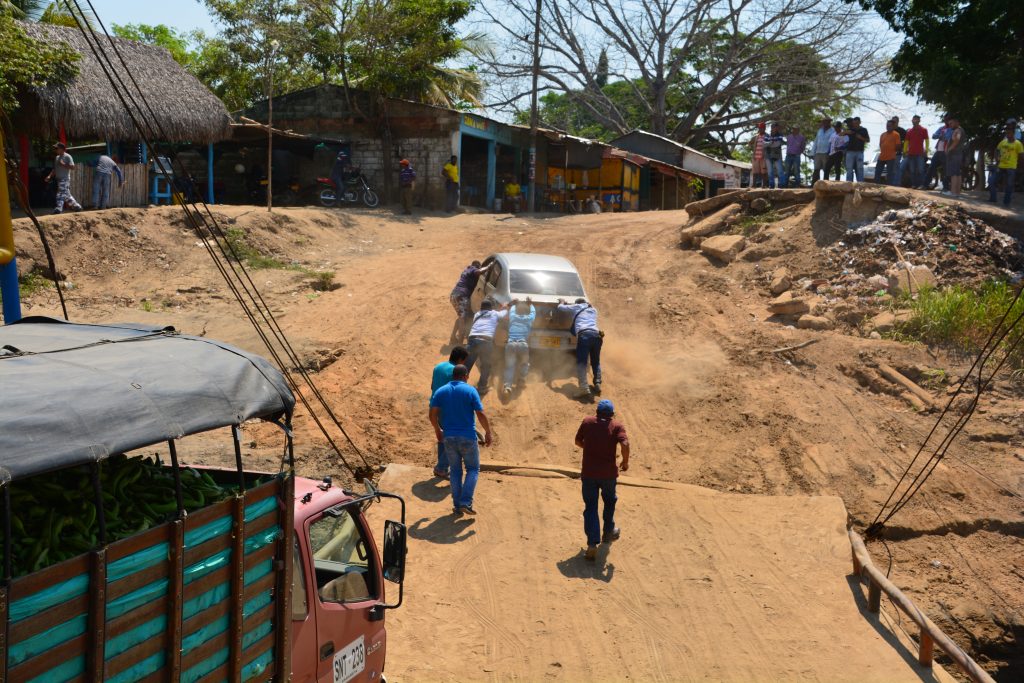
The steep dusty river bank at Bodega gave trucks and cars a big problem, including this car which needed a serious push
Mompox, the remote colonial town that time forgot underwhelmed us at first but after a journey of 26 hours to get there we were determined to like it. And so we did after finding its cosy downtown plazas and fabulous old churches. A couple of the churches were open for Friday night mass (although one of them hosted an armed policeman giving a rousing speech from the floor) and featured original wooden posts holding up the high vaulted ceilings and a lovely open air feel to catch any glimpse of breeze in the stifling heat.
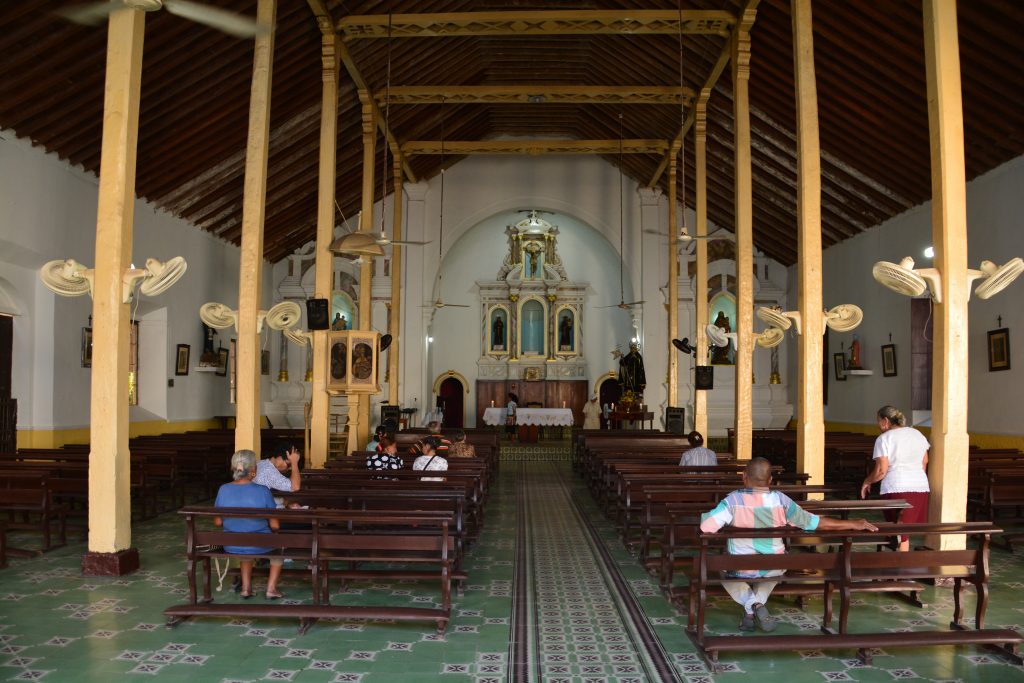
Mompox had some beautiful churches from the Spanish colonial days, including this one with the original wood beams holding the roof up
We chose a hotel on the riverbank and loved the walk along the promenade with a full moon shining bright above us. Mompox revealed its charm slowly to us with its old Spanish buildings, shady plazas and narrow streets and if you ignore the thousands of zipping motorcycles, dusty secondary streets and sky-high temps then the place has mucho appeal. What it was like to live in such an obscure and remote place back in the 16th century is beyond my comprehension.
Travel is slow in Colombia. On the first day in Trampito we averaged about 50 km per hour (30 mph) because of the bad roads, huge trucks and slow motorbikes, winding roads and crowded towns. On the second day we only covered 45 km the whole day, largely because of the long ferry. Our next plan, downgraded from a previous plan which was foolishly optimistic, was to head to the Caribbean coast and a small beach town called Santa Veronica, which we later learned is gaining a reputation for excellent kite-boarding during the windy season.
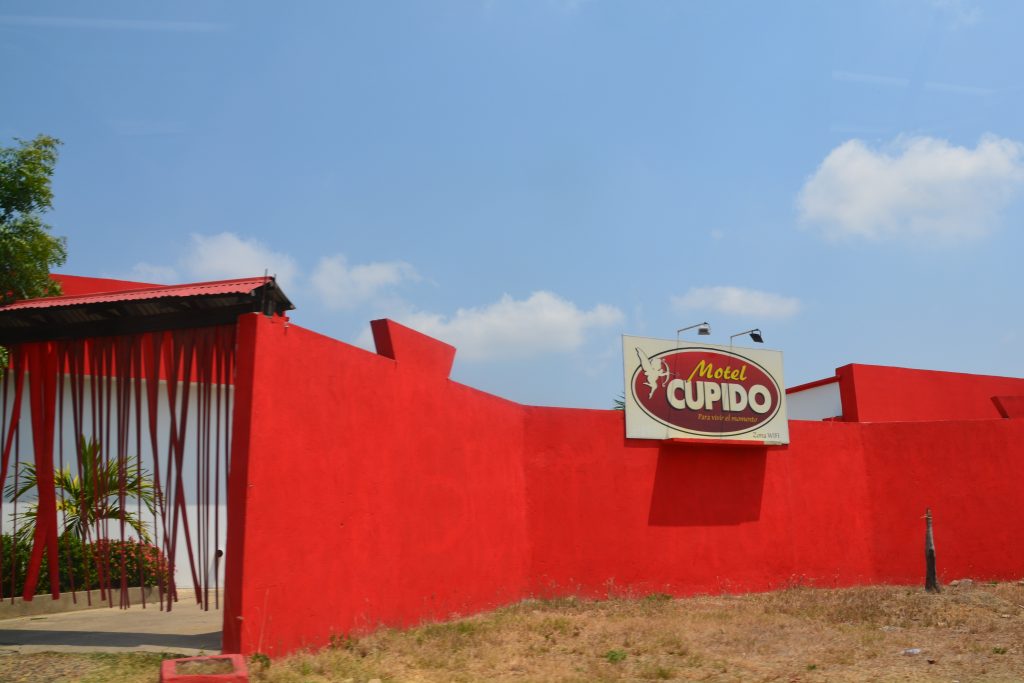
A feature of all countries in Central and South American countries is the ‘love motel’ where lovers can park behind high walls and pay by the hour – including at the colourful Cupido Motel
Even still, this was a six and a half hour driving day, a long day for us, but we loved how the roads were largely determined by the inland water, and particularly the massive Magdalena River which runs down the spine of the country. There are only two bridges across the river in northern Colombia so we headed for the southern version near the town of Plato, then worked our way up the river’s western flanks and through the mountains until we reached Santa Veronica.
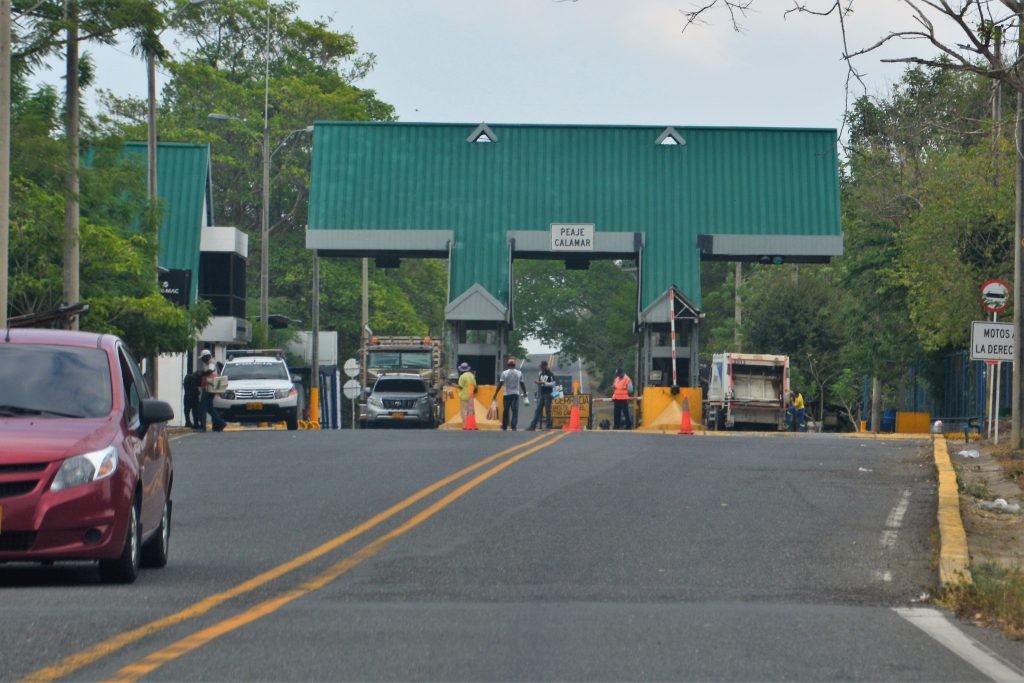
There’s no escape from the toll booths of Colombia and despite the roads generally being crap the tolls are very high – each stop could be up to $8
Our little beach hotel was perched right on the edge of the sandy beach, our hotel room overlooked the beach and our room enjoyed the ocean breezes (read wind) all night. It was a lovely quiet little spot hosted by a friendly couple of Colombian/Americans.
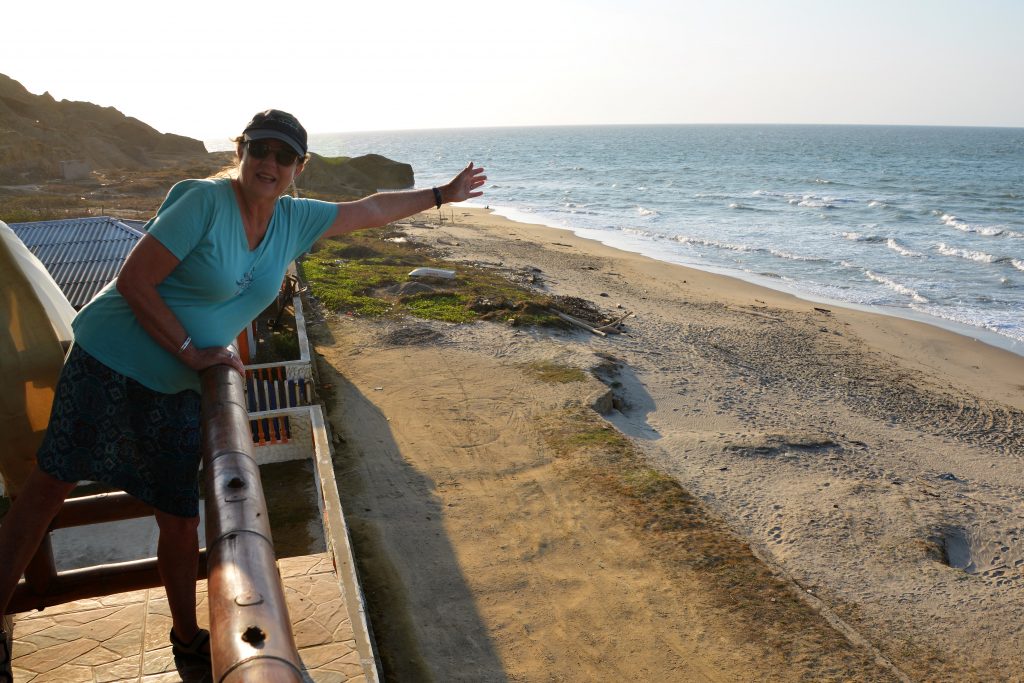
Hey, its the Gulf of Mexico, or the Caribbean, we were never quite sure but it looked great from our room’s balcony
The next morning we followed the coast back down to Cartagena, stopping briefly at Volcan Tutomo, a strange bubbling muddy cone on the banks of a lake where visitors can climb the stairs and enjoy a mud bath before racing down to the lake for a cleansing swim. We declined.
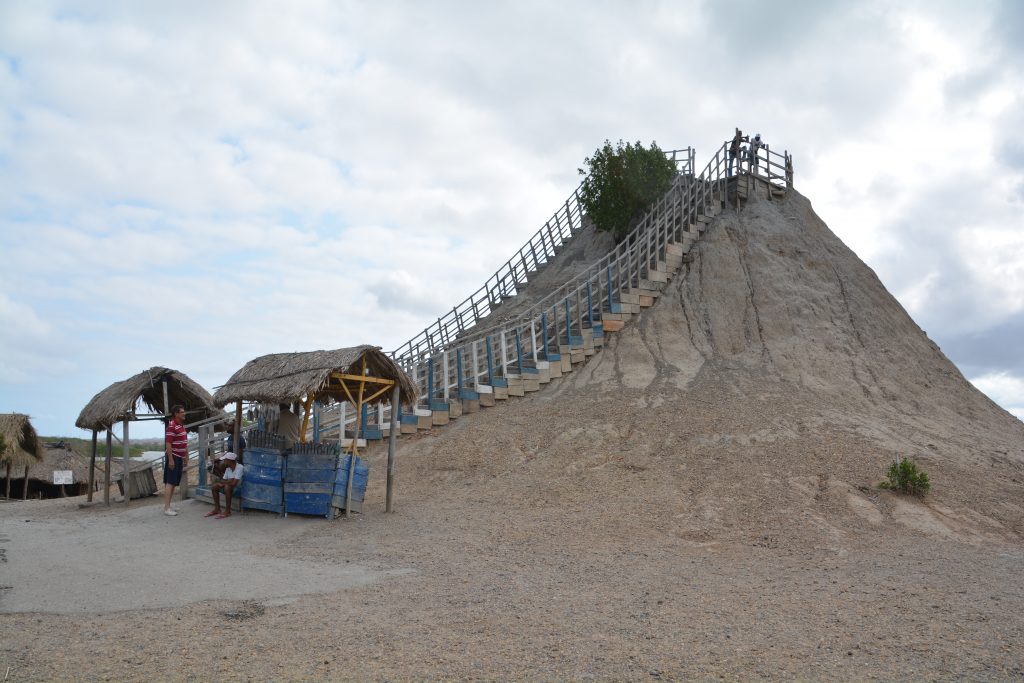
Volcan Tutomo, kind of a strange place but if you pay their outrageous fees you can walk up the steps and have a mud bath
Our four-day excursion in Trampito had come to an end after a great little exploratory drive around northern Colombia. We covered 777 kilometres across some ordinary roads, paid almost COP 50,000 in road tolls (okay, it sounds a lot but it’s only about $20) and endured cold showers in all the hotels. The highlight of this mini-trip was the entertainment of loading and unloading from the Magdalena River ferry. Great stuff. But with the weekend over our full attention turned to more important things – helping Tramp escape from the claws of Colombian port authorities and starting our huge drive southward.
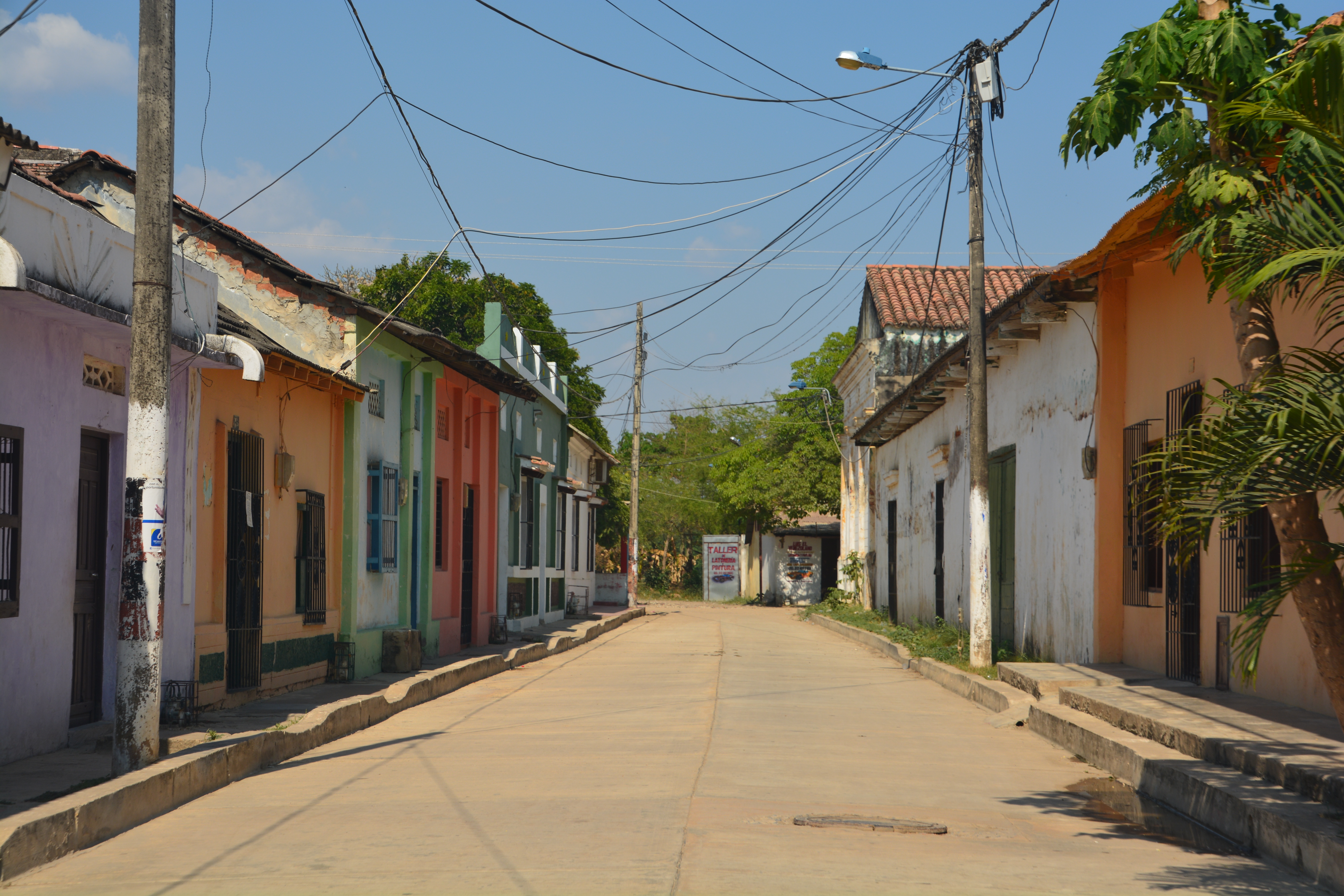















Welcome back to Tramp and smooth travels South. Loving the photos and mental images of your journey, with excitement around every corner.
Stay safe and sending hugs to you both.
With lots of love
Anne
xoxo
Thanks Anne. Julie and I keep telling ourselves that every day brings new surprises, mostly good ones, and its always fun to anticipate the next series of events. Cheers.